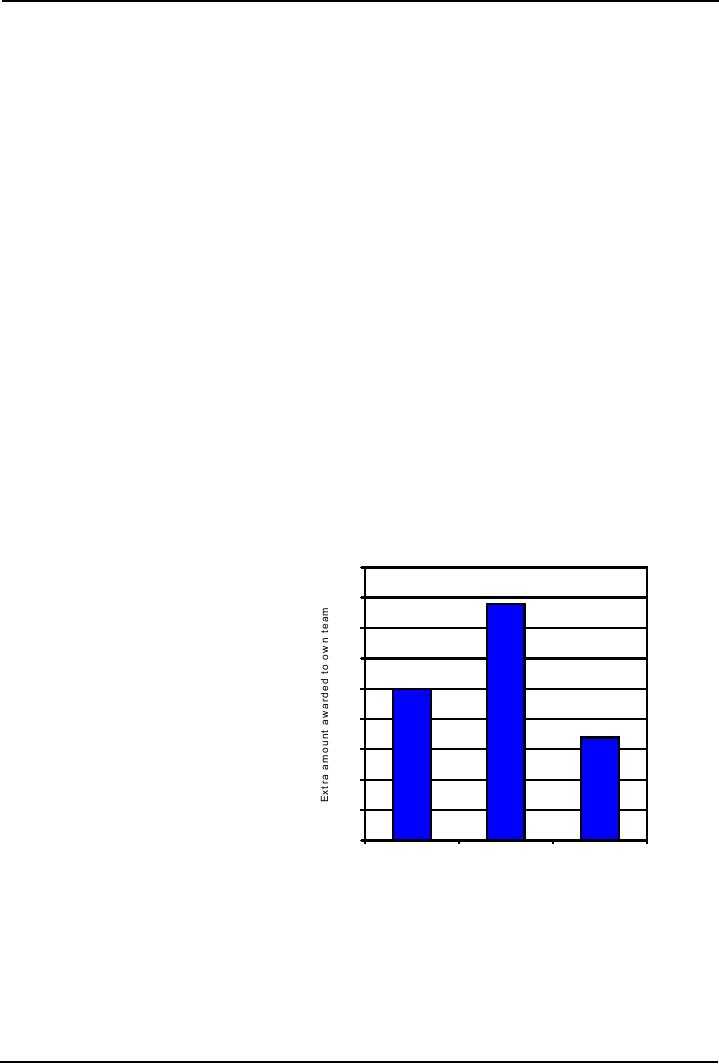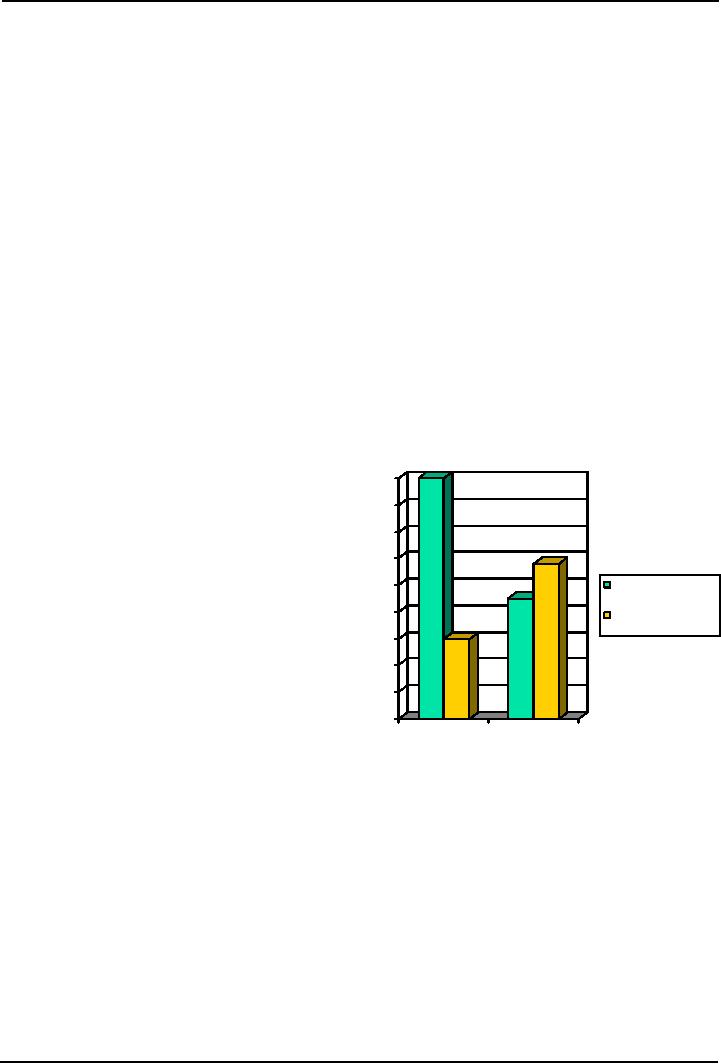 |

Social
Psychology (PSY403)
VU
Lesson
27
REDUCING
PREJUDICE AND DISCRIMINATION
This
lecture will explore the
prospects for reducing
prejudice and discrimination. Two
techniques are
generally
recommended for this
purpose:
1.
Contact hypothesis (group-based)
2.
Re-categorization (Individual based):
This approach is considered individual
based as it is done by
changing
people's thinking, The
following 2 techniques are employed in
this regard:
Combination
Subtypes
and
individual
uniqueness
The
contact hypothesis
Contact
between members of different social groups,
under appropriate conditions,
can lead to reductions
in
intergroup bias (Allport,
1954; Amir, 1969)
Benefits
of contact: Wright et al.
(1997)
Participants
divided into two
teams
Compete
against each other
One
person from each team
participated in an exercise to promote
friendship with one member of
the
opposing
team
At
each stage of the experiment
asked to divide an imaginary
$500 between the teams
The
results of this experiment have
been
The
benefits of contact
illustrated
below in Figure 1:
Conditions
necessary for contact
to
130
reduce
intergroup bias
120
Mere
contact between groups will not
necessarily
reduce prejudice. It
actually
110
requires
manipulation of a lot
of
situational
variables. Thirty years
after
100
Allport's
contact hypothesis, studies
90
concluded
that only contact is not
enough,
it
should
be pleasant, sustained
and
80
cooperative
than competitive.
The
70
following
conditions need to be
fulfilled
for
contact
to be effective for
reducing
60
prejudice
and discrimination
50
Social
norms
favouring equality must
be
in
40
place
After
team building
After
competition
After
friendship
Phase
of study
There
must
be sustained close contact
Figure
1
Contact
must
occur under conditions of equal
social status
Contact
must
be in the form of co-operative
interaction
106

Social
Psychology (PSY403)
VU
1.
Social norms
The
social conditions (government policy,
schools, law) should all
promote equality. Social
norms have
a
significant impact on determining
people's intentions. It is where
political and authority figures
and
group
leaders can play an
important role. If they
publicly state support for
equality, others are likely
to
follow
that lead. If supervisors tell at
work places that sex,
race, or statements based on
physical
characteristics
will not be tolerated, such
attitude can be reduced. On the other
hand, if they oppose
intergroup
contact, prejudice reduction is unlikely.
Unfortunately many political and
religious leaders
encourage
segregation for their own
benefits. In psychology, the use of a
few terms for
different
psychopathologies
is discouraged for the same reasons,
for example, alcoholics,
schizophrenic,
mentally
retarded, etc. Similarly instead of
`Abnormal Psychology' use of
`Mental health problems'
is
recommended.
Cognitive
dissonance (Festinger,
1957)
When
attitudes are not in line
with behaviour this causes
an unpleasant internal state.
o
People
are motivated to avoid this
dissonance.
o
So,
people are likely to change
their attitudes to be in line
with behaviour.
o
It
follows that laws which
prevent discriminatory behaviour
can therefore eventually
lead to changes in
attitudes
Sustained
close contact
�
Several
studies conducted in 1940s and
1950s demonstrated the importance of
this approach.
Studies
conducted in France, UK, Germany,
Finland, and the Netherlands demonstrate
that
intergroup
friendship can reduce subtle and
blatant prejudice.
�
Despite
multicultural schools, prejudice is
not decreased as children of
different races
segregate
themselves
in corners of class, cafeteria and
play grounds. Researchers suggest
that children should
not
be even sitting separately on the basis of
their achievements.
�
Contact
must be of sufficient frequency,
duration, and closeness to allow
the development of
meaningful
inter-group relations. Cook
(1978) refers to that by using the term
of `acquaintance
potential',
which means that
participants get to know each
other. In this way, bias
relevant to media
portrayals
can be removed.
�
Close
contact will lead to generalisation of
the increased positive attitude towards
the individual to
the
group as a whole (Cook,
1962)
�
Stephan
& Rosenfield (1978): Increased
quality contact did lead to
improvement of White
Amercians'
attitudes towards Mexican
Americans
�
`Team
sports' is used as an effective strategy
in schools (Brown et al.,
2003) for motivating
students
to work together and work.
Similarly `Jigsaw puzzle' technique is
used in US schools
for
promoting
idea of working together and
solving problems.
Study
of Stephan & Stephan (1984)
Correlational
path analysis revealed....Frequency and
closeness of contact ---> increased
knowledge about
the
out-group ---> increased
positivity of attitudes towards
out-group
107

Social
Psychology (PSY403)
VU
3.
Equal social
status
Status
is another form of prejudice.
Intergroup contact does not
always breed goodwill. For
example,
when
it occurs between privileged and minority
classes, it can in fact
increase stereotypes and
tension.
According
to Allport, equal status
majority, and equal status
minority should have contacts
within their
own
groups. It implies that the groups
interacting must be roughly
equal in social
status
If
the
minority group has contact
with the majority group as a subordinate
then this is likely to
perpetuate
negative
stereotypes of inferiority
Teachers
in
schools and supervisors at work
conditions should avoid
creating unequal status
groups
4.
Intergroup cooperation
�
Co-operation
is necessary for reductions in bias. As in the
Robbers
Cave Experiment (Sherif et
al.,
1966),
animosity between the Rattlers and Eagles
subsided when they engaged
in a joint activity to
achieve
mutually shared goals (superordinate).
Similar results have been
obtained in a variety of
experimental
and field settings, including schools,
work, and the armed forces.
Superordinate
goals and
cooperation
Blanchard
et al. (1975) showed that
co-operation works best when
the outcome of the superordinate goal is
successful
Study
of Weigel et al (1975):
They
compared the effects of cooperative
vs.
0.9
traditional
teaching techniques in
newly
desegregated
schools in USA.
0.8
0.7
Junior
and senior high school children were
0.6
taken
as subjects.
Conflict
across
0.5
groups
60%
white; 20% African
Americans; 20%
0.4
Helping
behaviour
Hispani
0.3
In
cooperative classes, students
worked in
0.2
racially
mixed teams of 4-6 students
and
0.1
cooperated
as a group on all
assignments
0
Teachers
ethnically varied
T
raditional
Cooperative
The
results of traditional and
cooperative
techniques
of teaching can be clearly
seen in Figure 2:
Figure
2: Effect of cooperative teaching
in
newly
desegregated schools
In
essence, It has been
concluded in different studies
that contact is meaningless or even
counterproductive
unless
it has mutual goals, equal
status, and sustained contact.
Problems
with the contact
hypothesis
Meta
analysis of numerous studies testing
Allport's contact hypothesis indicate
that intergroup contact,
under
certain conditions, does
indeed have a substantial effect in
reducing prejudice. However, a
few
problems
have also been pointed out
in contact hypothesis:
utual
intergroup anxiety: The
minority may have stereotype threat
that they will be evaluated
negatively
M
by
the majority. In contrast, majority group
may be anxious of saying something
negative.
108

Social
Psychology (PSY403)
VU
an
lead to a protective self-presentation
style: Dominant group member
talks less, while
minority
C
interprets
it as hostility. This communication
can result in
backfire.
eneralization
- contact may lead to subtyping of the
particular individual away
from the group
G
representation
(so category-based prejudice
remains).
o,
contact will only reduce
bias if the individuals are
highly typical members who
cannot be subtype
S
away
from the group so easily
(Wilder, 1984).
ontact
hypothesis is overly complex there
are so many conditions under
which contact must occur
that
C
it
becomes unworkable.
Can
stereotyping be monitored through
Recategorization
There
are two viewpoints regarding
the efforts to reduce
prejudice:
1.
Stereotyping thinking is an adaptive
mental strategy that has
allowed us to survive as a
species
(Fox,
1992; Vaes et al., 2003).
Some social psychologists maintain
that we have to create in-
and
out-groups
for better functioning and
for protecting the rights of
our group. Moreover it saves
our
cognitive
resources for investing in
other activities. They also
indicate that being an
automatic
process,
stereotyped thinking can not be
changed. Hence, they think
that efforts to reduce
prejudice
are
futile.
2.
Patricia Devine maintained
that change is possible by conscious
efforts. According to her,
people
need
to use cognitive efforts to
reduce prejudice. She
indicated that many people
learn stereotypes
early
in life so people may
display unintended prejudiced
responses. Positive change
can only
occur
if people make conscious
effort to think more rationally and
deductively.
Two
types of recategorization:
ombination
C
Separate
groups might be combined into one
larger group for reducing
prejudice, e.g., if Whites and
Blacks
marry
each other, the children
will be of brown colour.
This is what has happened in
America. Although
racial
discrimination has not
totally abolished by this, it
has helped at least in
reducing prejudice against the
minorities.
On similar lines, Zaat
Beraadri intermarriages
will help reduce
discriminatory behaviour
for
other
groups.
Subtypes
and individual
uniqueness
We
might try to break the
existing categories into smaller
subtypes, or to further divide the
subtypes into
units
so small that each
individual is regarded as unique.
The
Common Ingroup Identity
model (Gaertner et al.,
1993)
`Re-categorization'
from a two-group (`us' vs.
`them') representation to a one-group
representation
Gaertner
et al.'s study
(1989):
Two
minimal groups formed
Two-groups
vs. one-group conditions
Participants
either sat round a table in
a segregated (AAABBB) or integrated
(ABABAB) order
Problem
solving
exercise requiring either
original (segregated) groups decision or
aggregated groups
decision
109

Social
Psychology (PSY403)
VU
Superordinate
categorization and
Superordinate
categorization and
cognitive
representation
reduction
of bias
6
Two-group
6
5
.5
representation
5
In-group
One-group
4
.5
Out-group
representation
4
5.5
3
.5
3
2
.5
2
5
1
.5
1
0
.5
0
4.5
Segr
egated
A
ggr egated
Segregated
Integrated
Categorization
condition
Categorization
condition
Comparison
between combination & subtype
methods
Students
first divided into two
three-person groups
Both
distinct groups displayed ingroup
favouritism and prejudice
Introduction
of
2 recategorization manipulations
Persuaded
the
students as belonging to one groups (6
people; like summer cave);
relevant to combining
different
cultures into one "seamless"
Other
method
emphasized individual
uniqueness
Results
Both
types significantly reduced in-group
bias
Individual
uniqueness
manipulation reduced in-group
bias (connection with the
self broken)
The
one
category manipulation caused
students to think more highly of
former outgroup members
(started
criticizing
ingroup; began awarding
former outgroup the benefits of
kinship)
Applied
Social Psychology
Lab
Can
we design programs that produce healing
contact in real-life social groups who
dislike each other?
Arranging
equal
status, co-operative, intimate,
pleasant contact in the pursuit of common goals
between
groups
that are initially hostile
to each other
Common
group
identity at work place should be
promoted rather than segregation
Media
and
government support for promoting
equality is highly
essential
Reading
�
Franzoi,
S. (2003). Social
Psychology. Boston:
McGraw-Hill. Chapter 8.
Other
Readings
�
Lord,
C.G. (1997). Social
Psychology. Orlando:
Harcourt Brace and Company. Chapter
8.
�
David
G. Myers, D. G. (2002). Social
Psychology (7th ed.).
New York:
McGraw-Hill.
110
Table of Contents:
- INTRODUCTION TO SOCIAL PSYCHOLOGY:Readings, Main Elements of Definitions
- INTRODUCTION TO SOCIAL PSYCHOLOGY:Social Psychology and Sociology
- CONDUCTING RESEARCH IN SOCIAL PSYCHOLOGY:Scientific Method
- CONDUCTING RESEARCH IN SOCIAL PSYCHOLOGY:Evaluate Ethics
- CONDUCTING RESEARCH IN SOCIAL PSYCHOLOGY RESEARCH PROCESS, DESIGNS AND METHODS (CONTINUED)
- CONDUCTING RESEARCH IN SOCIAL PSYCHOLOGY OBSERVATIONAL METHOD
- CONDUCTING RESEARCH IN SOCIAL PSYCHOLOGY CORRELATIONAL METHOD:
- CONDUCTING RESEARCH IN SOCIAL PSYCHOLOGY EXPERIMENTAL METHOD
- THE SELF:Meta Analysis, THE INTERNET, BRAIN-IMAGING TECHNIQUES
- THE SELF (CONTINUED):Development of Self awareness, SELF REGULATION
- THE SELF (CONTINUE…….):Journal Activity, POSSIBLE HISTORICAL EFFECTS
- THE SELF (CONTINUE……….):SELF-SCHEMAS, SELF-COMPLEXITY
- PERSON PERCEPTION:Impression Formation, Facial Expressions
- PERSON PERCEPTION (CONTINUE…..):GENDER SOCIALIZATION, Integrating Impressions
- PERSON PERCEPTION: WHEN PERSON PERCEPTION IS MOST CHALLENGING
- ATTRIBUTION:The locus of causality, Stability & Controllability
- ATTRIBUTION ERRORS:Biases in Attribution, Cultural differences
- SOCIAL COGNITION:We are categorizing creatures, Developing Schemas
- SOCIAL COGNITION (CONTINUE…….):Counterfactual Thinking, Confirmation bias
- ATTITUDES:Affective component, Behavioral component, Cognitive component
- ATTITUDE FORMATION:Classical conditioning, Subliminal conditioning
- ATTITUDE AND BEHAVIOR:Theory of planned behavior, Attitude strength
- ATTITUDE CHANGE:Factors affecting dissonance, Likeability
- ATTITUDE CHANGE (CONTINUE……….):Attitudinal Inoculation, Audience Variables
- PREJUDICE AND DISCRIMINATION:Activity on Cognitive Dissonance, Categorization
- PREJUDICE AND DISCRIMINATION (CONTINUE……….):Religion, Stereotype threat
- REDUCING PREJUDICE AND DISCRIMINATION:The contact hypothesis
- INTERPERSONAL ATTRACTION:Reasons for affiliation, Theory of Social exchange
- INTERPERSONAL ATTRACTION (CONTINUE……..):Physical attractiveness
- INTIMATE RELATIONSHIPS:Applied Social Psychology Lab
- SOCIAL INFLUENCE:Attachment styles & Friendship, SOCIAL INTERACTIONS
- SOCIAL INFLUENCE (CONTINE………):Normative influence, Informational influence
- SOCIAL INFLUENCE (CONTINUE……):Crimes of Obedience, Predictions
- AGGRESSION:Identifying Aggression, Instrumental aggression
- AGGRESSION (CONTINUE……):The Cognitive-Neo-associationist Model
- REDUCING AGGRESSION:Punishment, Incompatible response strategy
- PROSOCIAL BEHAVIOR:Types of Helping, Reciprocal helping, Norm of responsibility
- PROSOCIAL BEHAVIOR (CONTINUE………):Bystander Intervention, Diffusion of responsibility
- GROUP BEHAVIOR:Applied Social Psychology Lab, Basic Features of Groups
- GROUP BEHAVIOR (CONTINUE…………):Social Loafing, Deindividuation
- up Decision GROUP BEHAVIOR (CONTINUE……….):GroProcess, Group Polarization
- INTERPERSONAL POWER: LEADERSHIP, The Situational Perspective, Information power
- SOCIAL PSYCHOLOGY APPLIED: SOCIAL PSYCHOLOGY IN COURT
- SOCIAL PSYCHOLOGY APPLIED: SOCIAL PSYCHOLOGY IN CLINIC
- FINAL REVIEW:Social Psychology and related fields, History, Social cognition